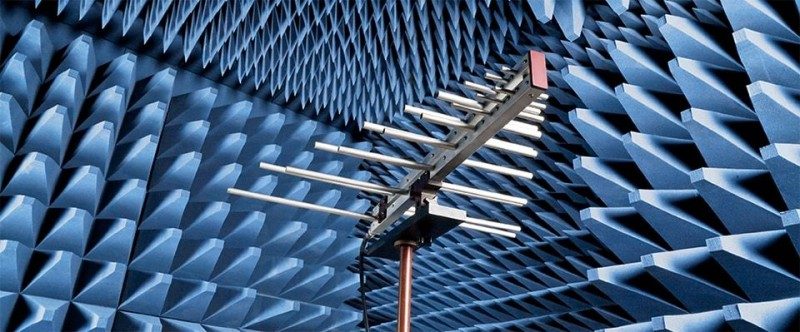EMC Eğitimi
Ürünlerine CE markalama almak isteyen firmalar için Elektromanyetik Uyumluluk (EMC) eğitimi verilmektedir. Bütün elektrikli, elektronik ve elektromekanik cihazlar çalışırken çevreye bir miktar elektromanyetik enerji çıkarırlar. Ortaya çıkan veya ortamda varolan bu enerjiden cihazların veya sistemlerin etkilenmesine “Elektromanyetik Girişim” (Electromagnetic Interference, EMI) denir. “Elektromanyetik Uyumluluk” (Electromagnetic Compatibility, EMC) ise, bir cihaz veya sistemin elektromanyetik ortamda, bir girişime neden olmadan ve bir girişimden etkilenmeden çalışmaya devam etmesidir. Başka bir ifadeyle cihaz veya sistemin çalışıyorken diğer cihaz veya sistemleri etkilememesi ve onların çalışmasından etkilenmemesi olarak tanımlanabilir.
Özellikle donanım tasarım mühendisleri için hazırlanan bu eğitimin amacı katılımcılarına elektromanyetik uyumluluk kavramlarını ve teorisini detaylı bir şekilde öğreterek sağlam bir temel inşa etmek ve bu temel üzerine pratik uygulamalardan örnekleri de ekleyerek, mühendisin tasarım aşamasında EMC’ye uygun tasarım yapmasını sağlamaktır. Bu proaktif yaklaşım ile prototip sayısı azalacak böylece tasarım süresi ve maliyeti düşecektir.
Eğitimin kapsamı ve takvimi aşağıda verilmektedir. Kapsam ve sunum, konu ile ilgili terimlerin çoğu henüz Türkçeleşmediği için İngilizce verilecektir, eğitimin anlatım dili Türkçedir.
- Introduction to EMC (1.Gün)
- Basic concepts of Electromagnetic Field Theory
- Definition & Terms of EMC
- EMC units
- Radiation and frequency spectrum
- Antenna Theory
- Source and Victim
- Coupling Modes
- Common-Mode Coupling
- Field To Cable
- Ground Impedance
- Ground Loop
- Coupling Reduction Techniques
- Differential-Mode Coupling
- Field To Cable
- Cable To Cable
- Coupling Reduction Techniques
- Capacitive coupling
- Inductive coupling
- Common-Mode Coupling
- MIL-STD-461G Standard (2.Gün)
- Test Requirements
- Limits
- Test Setups
- Test Equipments
- Measurement thresholds
- Measurement tools
- Radiated Emission Tests
- Goal and purposes
- Test equipment
- Implementation
- Protocols
- Data demonstration
- Conducted Emission Tests
- Goal and purposes
- Test equipment
- Implementation
- Protocols
- Data demonstration
- Radiated Susceptibility
- Goal and purposes
- Test equipment
- Implementation
- Protocols
- Data demonstration
- Conducted Susceptibility
- Goal and purposes
- Test equipment
- Implementation
- Protocols
- Data demonstration
- Design for EMC 1 (3.Gün)
- Non-ideal or high-frequency behavior of components
- Resistor
- Capacitor
- Inductor
- EMI Supression Components and their models
- EMI Filters
- EMI Supression Capacitors
- RF inductors
- Ferrite Beads
- Ferrite Cores
- Ferrite Clamps
- Common Mode Filters
- Feed Through Capacitor
- Gaskets, Sheets, Absorbers
- Design for EMC 2 (4.Gün)
- PCB layout and Grounding
- Track Impedance
- Proximity of Return Path
- Gridded and Ground Plane Layouts
- Single Point Grounding Schemes
- Multi-Point Grounding Schemes
- Hybrid Grounding Scheme
- Effect of Discontinuities
- Optimum Ground and Power Plane Configuration
- Layer Stack-up and Edge Fffects
- Cables and connectors
- Unscreened Cables: Twisted Pair, Ribbon
- Modes of Propagation
- Screen Function
- The effect of the connector
- Shielding
- Theory of Reflection and Absorption
- Effect of Apertures and Seams, Hatches and Doors
- Conductive Gaskets
- Conductive Coatings and Shielded Windows
- Partitioning Shielded Enclosures
- Digital and Analogue Circuit Design
- Clocks
- Transmission Line Matching
- Power Rail Decoupling
- Logic Circuit Immunity: Timing and Logic Threshold Constraints
- Transient Susceptibility and the Watchdog
- Analogue Circuit Immunity
- EMI Diagnostics And Fixes
- PCB layout and Grounding
- Non-ideal or high-frequency behavior of components
- Test Requirements




